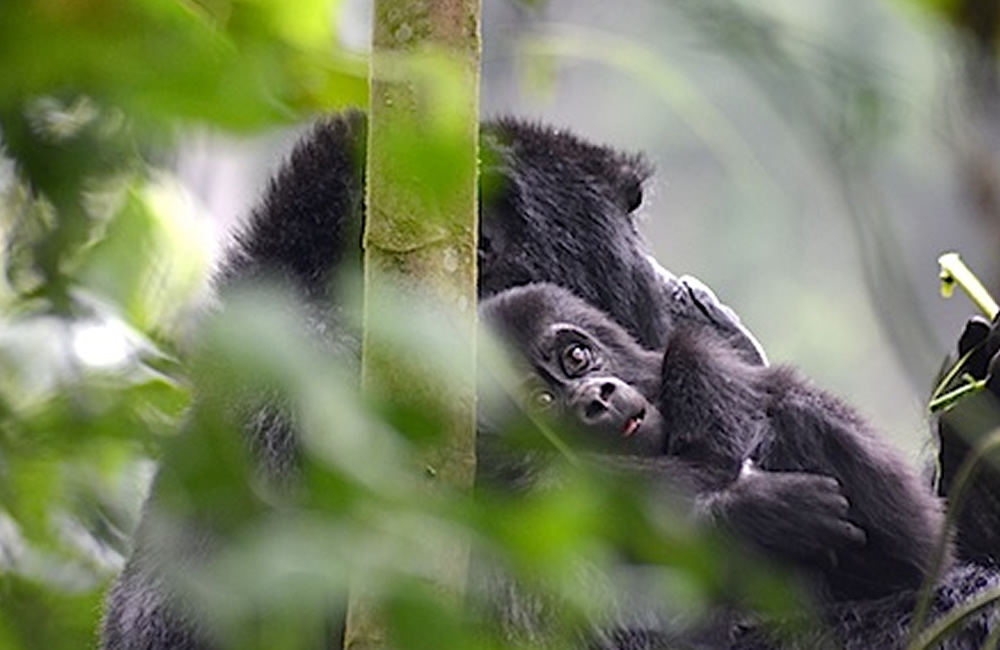Are you planning to visit Virunga National Park for an adventure in the Democratic Republic of Congo? For many travelers, a gorilla safari in this park is a once-in-a-time experience. In the Democratic Republic of Congo, it pays one to plan and research for a safari experience to ensure that you get the very best trip. Tourists or travelers who are planning and wish to visit can book a gorilla safari with us.
Africa’s oldest national park, Virunga National Park is a UNESCO World Heritage Site located in the east of the Democratic Republic of Congo. Situated in a region that has been deeply impacted by the effects of war and armed conflict for 20 years, Virunga is currently protected by a dedicated team of 689 rangers. The local men and women go through intensive training, risking their lives on a daily basis to safeguard the park’s exceptional wildlife including the world’s last endangered mountain gorillas.
Start your gorilla safari trip as you head to Goma, which is just across the border from Gisenyi (Rubavu) which is about a 3 hours’ drive from Kigali. If you don’t have your own vehicle, you can easily catch a bus from the Nyabugogo bus station, and generally leaves every half hour. If you’ve got a lot of bags, you will probably want to stake your claim to good seats and stash your bags on a bus that’s not yet full which will probably mean waiting about 20 to 30 minutes for it to leave.
Arrive at Grande Barriere border crossing at 10:30 am and ensure check-in with Virunga tourism office by 11:15 am. The tourism office is located in the Grande Barriere border post building, opposite passport control. Guests will receive gorilla and volcano trek permits at check-in which must be presented at the start of each trek. Once check-in is complete, visitors will be transported to Kibumba.
After an early breakfast at Kibumba Tented Camp, the trekkers will head down the hill to meet their Ranger guides and have a briefing before the gorilla trek. Treks usually require 1-2 hours of hiking each way, depending on the location of the gorilla group being trekked and the difficulty of the terrain. After spending the allocated hour with the gorilla family group, trekkers will make their way back to camp, enjoy a late lunch and have the rest of the day at leisure, including time for nature walks and bird watching.
After breakfast in Kibumba, guests will be transported to the Kibati Ranger Post at 8:15 am, the departure point for the Nyiragongo volcano trek. It is an experience of a lifetime trekking up the mountain and thrilling onto the caldera of a live volcano to see the massive lava lake bubbling away. It’s dramatic at night when the entire sky glows red from the lava. The trek itself isn’t easy, a reasonable level of fitness is essential for the climb especially because of the altitude.
On arrival to Kibati, guests will receive a briefing and will have the opportunity to hire porters. The climb up the volcano will take around four to six hours and trekkers will overnight on the summit. You start at about 5000 feet and the summit is at about 11500 feet and the distance is about 8.5km. Going up works your lungs and coming down works your legs especially your knees. It is extremely cold up there so take all the warm weather gear you can.
Accommodation at the top of Mount Nyiragongo is inside small triangular tents that are pitched inside rough a-frame buildings, some with doors, most without. There are 12 fiberglass cabins at the top, each wide enough to take two single mattresses with about 20cms between them. The cabins are about 35cms longer than the mattress. Once close the door for the night they warm up a little.
You’ll be provided with a decent mattress and pillow. The tents aren’t huge and you’ll be in close quarters with your tent buddy, especially since some of them seem to be built on a slight angle which means you’ll roll into them which is great for keeping warm. This won’t matter unless you’re a single traveler since you might find yourself bunking with a stranger.
The next day early morning, guests will leave the crater rim and start the descent back to Kibati. The average descent time is four hours. Once at the bottom, guests will be transported back to Goma with drop-off at the Grande Barriere.

Leave a Reply